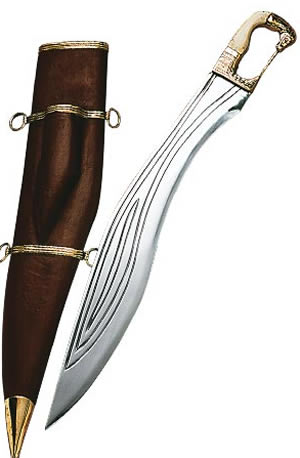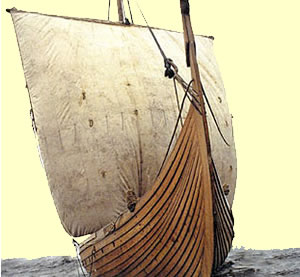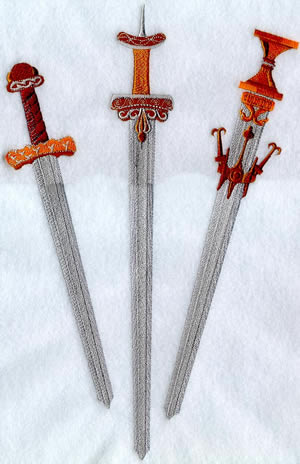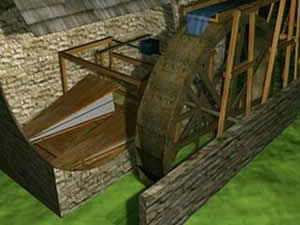Science of Conflict
Metallurgy-Iron
The origin of iron is not clear, but mention of iron in the writings of ancient Greeks is clear. Homer wrote about iron in poems around 880 BC. By the time Rome came to power the process of iron smelting was well known and Mediterranean Europe was well into the Iron Age. The Greeks built sophisticated iron foundries and were able to produce high quality weapons such as the curved kopis, pictured on the right.
Iron melts around
1535°C, however, European furnaces were not able to produce temperatures
beyond 1150°C. Such temperatures were right for the melting of copper,
tin and zinc but not for iron.
Iron heated to the maximum temperature of ancient furnaces, while still
in its solid form, could be forged to purify and shape it. Iron worked
in this way and containing only negligible carbon is called "wrought
iron," and its production is necessarily quite time consuming.
It was eventually discovered that adding a small amount of carbon, usually between three and four percent, reduced the melting temperature of iron to around 1150°C, which was the limit of ancient kilns and resulted in the formation of cast iron. Unfortunately the addition of carbon tends to make the iron brittle and so its introduction needs to be closely monitored.




What is an alloy?
What is the difference between,
wrought iron, cast iron and steel?
Explain how the properties of wrought iron, cast iron and steel differ.
What is forging of iron? How
does this make iron stronger and more usable?
Define the following terms:
- quenching.
- annealing.
- tempering.
Continue with an activity to form iron
Continue with an activity for quenching, annealing and tempering steel